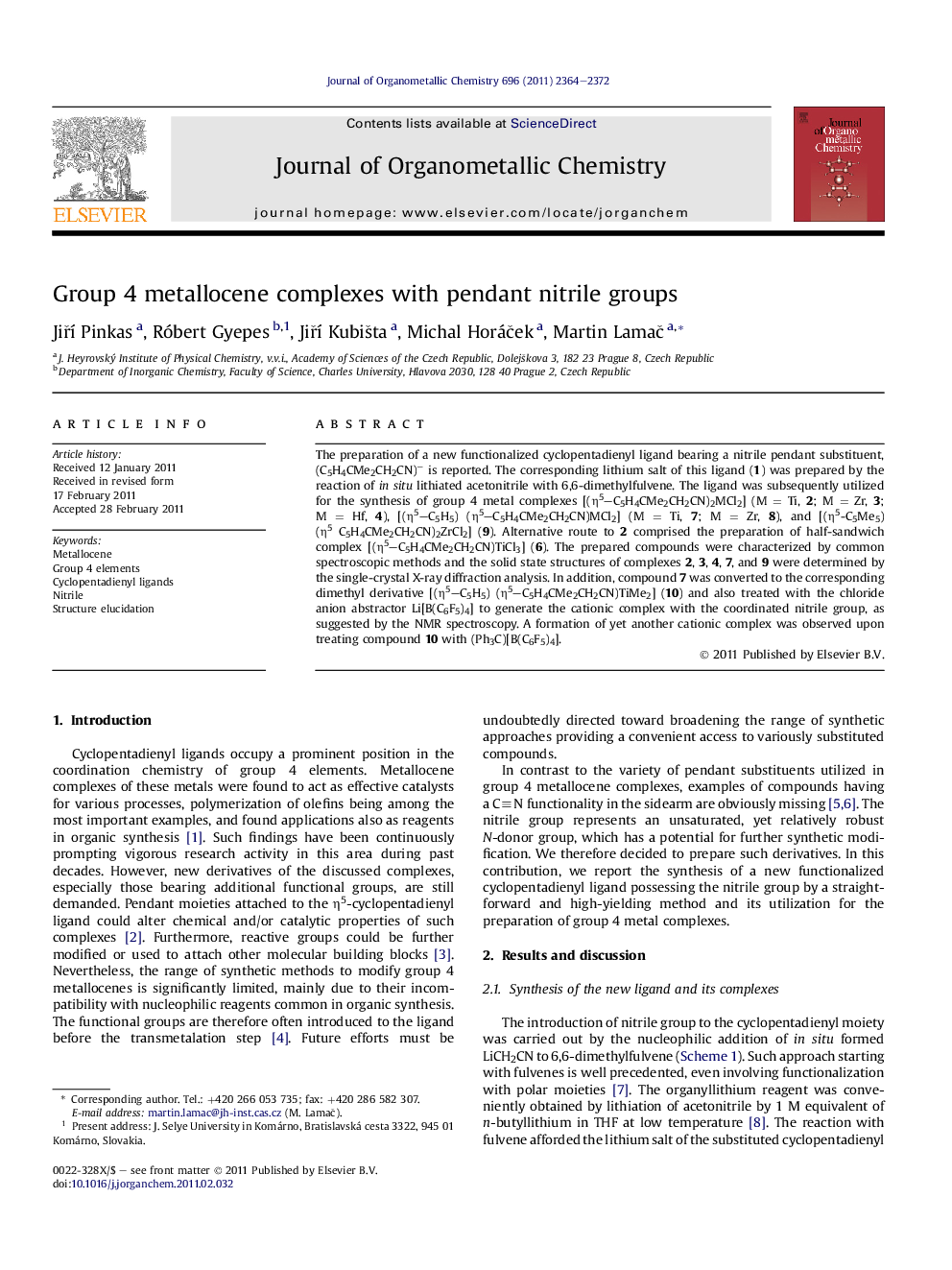| Article ID | Journal | Published Year | Pages | File Type |
|---|---|---|---|---|
| 1325444 | Journal of Organometallic Chemistry | 2011 | 9 Pages |
The preparation of a new functionalized cyclopentadienyl ligand bearing a nitrile pendant substituent, (C5H4CMe2CH2CN)− is reported. The corresponding lithium salt of this ligand (1) was prepared by the reaction of in situ lithiated acetonitrile with 6,6-dimethylfulvene. The ligand was subsequently utilized for the synthesis of group 4 metal complexes [(η5–C5H4CMe2CH2CN)2MCl2] (M = Ti, 2; M = Zr, 3; M = Hf, 4), [(η5–C5H5) (η5–C5H4CMe2CH2CN)MCl2] (M = Ti, 7; M = Zr, 8), and [(η5-C5Me5) (η5 C5H4CMe2CH2CN)2ZrCl2] (9). Alternative route to 2 comprised the preparation of half-sandwich complex [(η5–C5H4CMe2CH2CN)TiCl3] (6). The prepared compounds were characterized by common spectroscopic methods and the solid state structures of complexes 2, 3, 4, 7, and 9 were determined by the single-crystal X-ray diffraction analysis. In addition, compound 7 was converted to the corresponding dimethyl derivative [(η5–C5H5) (η5–C5H4CMe2CH2CN)TiMe2] (10) and also treated with the chloride anion abstractor Li[B(C6F5)4] to generate the cationic complex with the coordinated nitrile group, as suggested by the NMR spectroscopy. A formation of yet another cationic complex was observed upon treating compound 10 with (Ph3C)[B(C6F5)4].
Graphical abstractConvenient synthesis of a new cyclopentadienyl ligand functionalized with a nitrile pendant substituent is reported. The ligand was utilized for the preparation of group 4 bent metallocene or half-sandwich complexes that were characterized by spectroscopic methods and/or by single-crystal X-ray diffraction analysis. The reactivity of selected titanocene derivative was further investigated by performing an alkylation and an attempted conversion to cationic complex with coordinated pendant arm.Figure optionsDownload full-size imageDownload as PowerPoint slideHighlights► A new cyclopentadienyl ligand bearing a C≡N group in the pendant arm prepared. ► The ligand utilized in group 4 metal complexes, 5 characterized by X-ray diffraction. ► Titanocene dichloride with one pendant arm converted to the dimethyl derivative. ► Cationic species formed by abstracting Cl− or CH3− from the respective Ti complexes.
